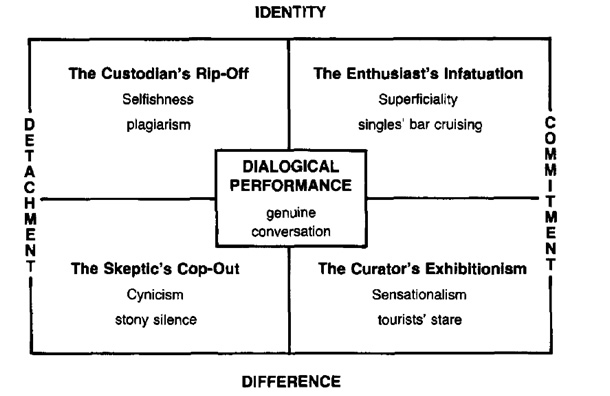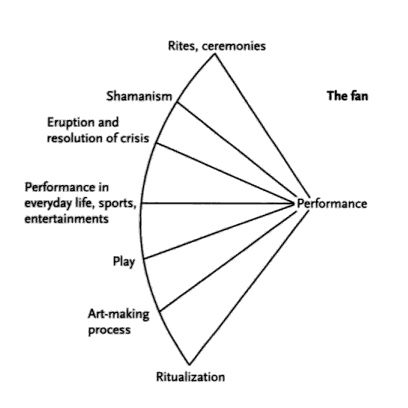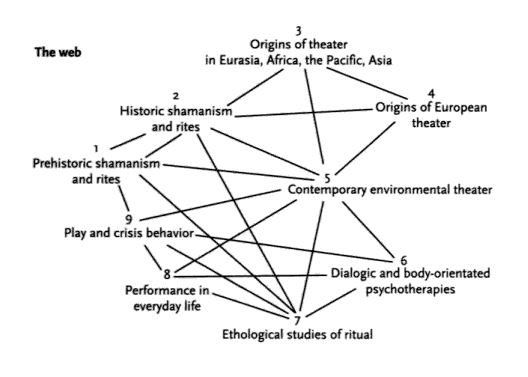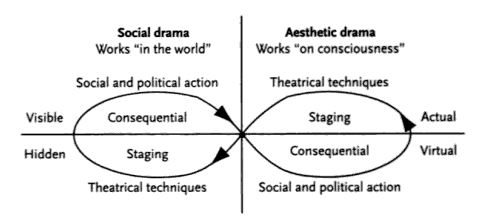GEK1046
Performance and Culture
Introduction
BASIC PREMISE
Many aspects of cultural life can be understood as performance: sports events, political demonstrations, national celebrations, religious rituals, weddings and funerals.
Why can social events be understood as performances?
- They are based on repetition ('twice-behaved behavior').
- They are limited in space and time.
- They are intentionally produced by some people for others to observe (to create an effect in others).
- They are based on interactions.
Is performance fake?
Sometimes we think of performance as fake, but that's not necessarily the case. Performance is a way of participating collectively in activities of meaning-making.
Advantages of thinking of Culture as performance
- It highlights the active participation of different people in the making of meaning.
- It allows you to see connections across many aspects of cultural life. Political events might have more in common with sports than you could think. Looking at them together paints a more complex picture of the history of a particular place.
Examples
- Parades
- Protests
- Festivals
- Weddings
Origins of Performance Studies
- A collaboration between theatre scholars and social scientists.
- The study of theatre becomes more sophisticated if you see theatre performances in relation to social histories and contexts.
- The study of certain social events becomes more interesting if taken as performance.
- Schechner and Turner were the first to work together.
The main theorists and their ideas
Ervin Goffman
- The Presentation of Self in Everyday Life (1956).
- "All the activity of and individual which occurs during a period marked by his continuous presence before a particular set of observers and which has some influence on the observers".
- Importance of role playing in social situations.
Ervin Goffman (continued)
- Corrective interchange: challenge, offering, acceptance and thanks.
- At the end the equilibrium is re-established, but it might mean an accommodation to a new order.
- Framing and keying: how particular situations are set apart in time and space.
- His emphasis is on the audience, and on how social performance functions on society.
Milton Singer
- "Cultural performance" in Traditional India: Structure and Change (1959)
- People think of their culture as encapsulated in discrete events.
- Concretization of cultural assumptions.
- "Most observable units of the cultural structure".
- Set apart in time, place and occasion.
- Recitations, religious festivals, weddings.
Victor Turner
- "Social Drama" in Schism and Continuity (1957).
- Focus on organizational structure of social events
- Based on Van Gennep's idea of rites of passage.
- Separation, transition and incorporation.
- Ceremony marking individual or social change: from peace to war, adolescence to adulthood, etc.
Dwight Conquergood

Richard Schechner
- Performance Theory (1977)
- Twice-behaved behavior
- Extensive collaboration with Victor Turner
Richard Schechner

The fan
Richard Schechner

The web
Richard Schechner

Dramatic Circle
Limits and applications
Limitations
- Performance is transient.
- The concept of performance can become to wide and all-encompassing to be meaningful.
How to use this approach
- Ask yourself: how could x be understood in terms of performance?
- What does it reveal? Is this more meaningful that studying this particular event?
- Ethnographic approach. Take notes, talk to people. Then review the notes. Don't assume form the outset it is a useful methodology.